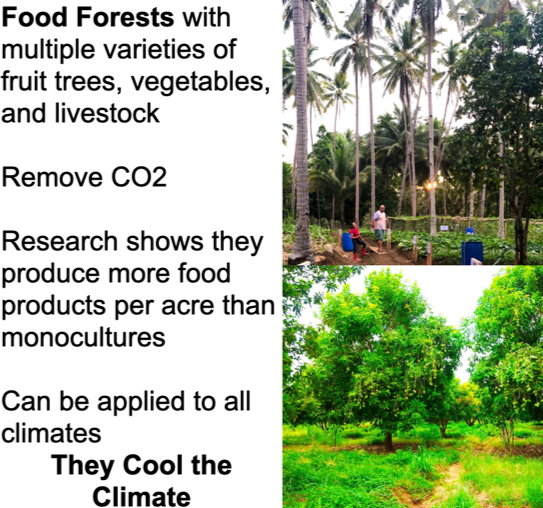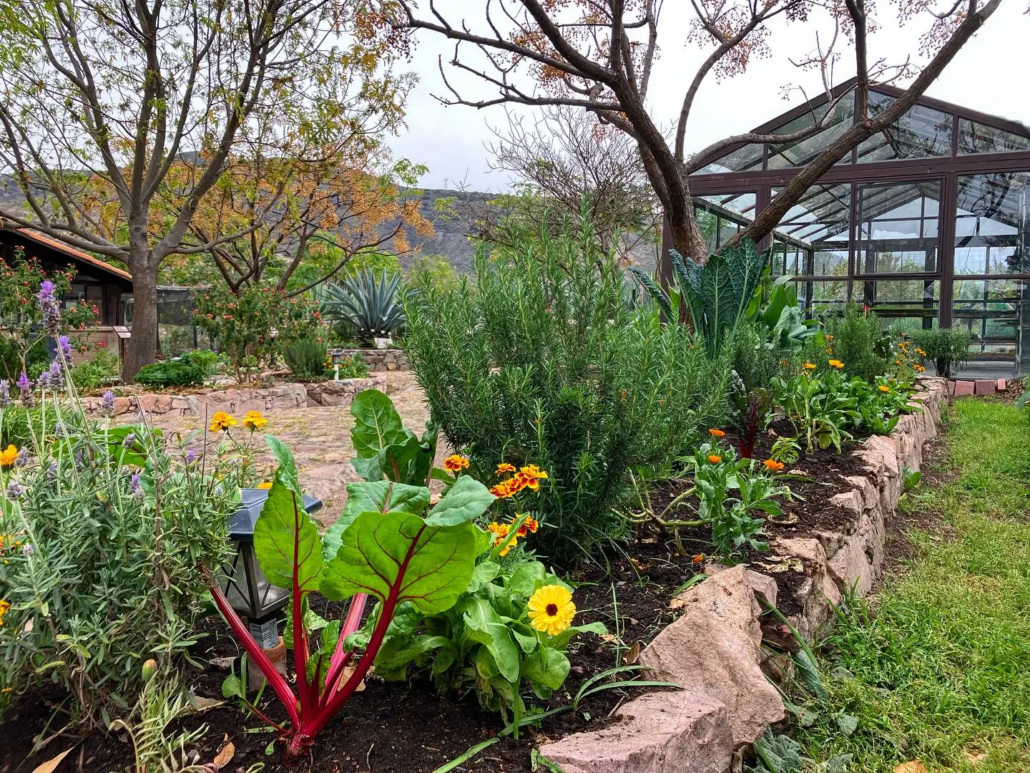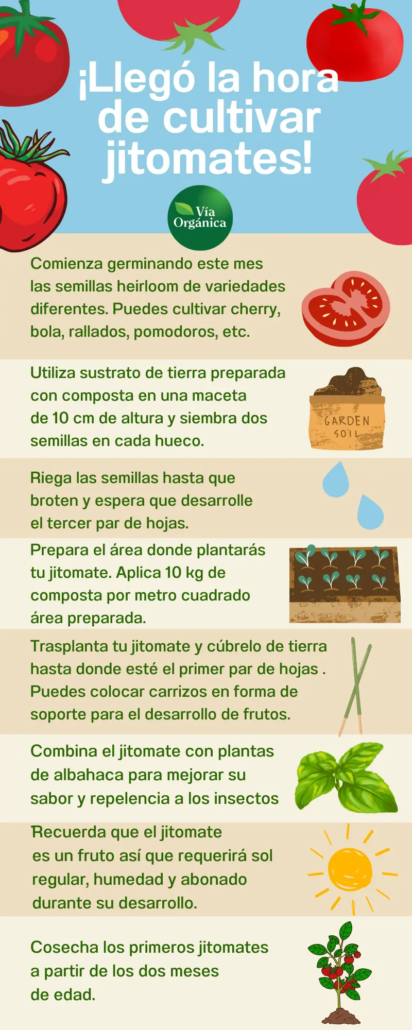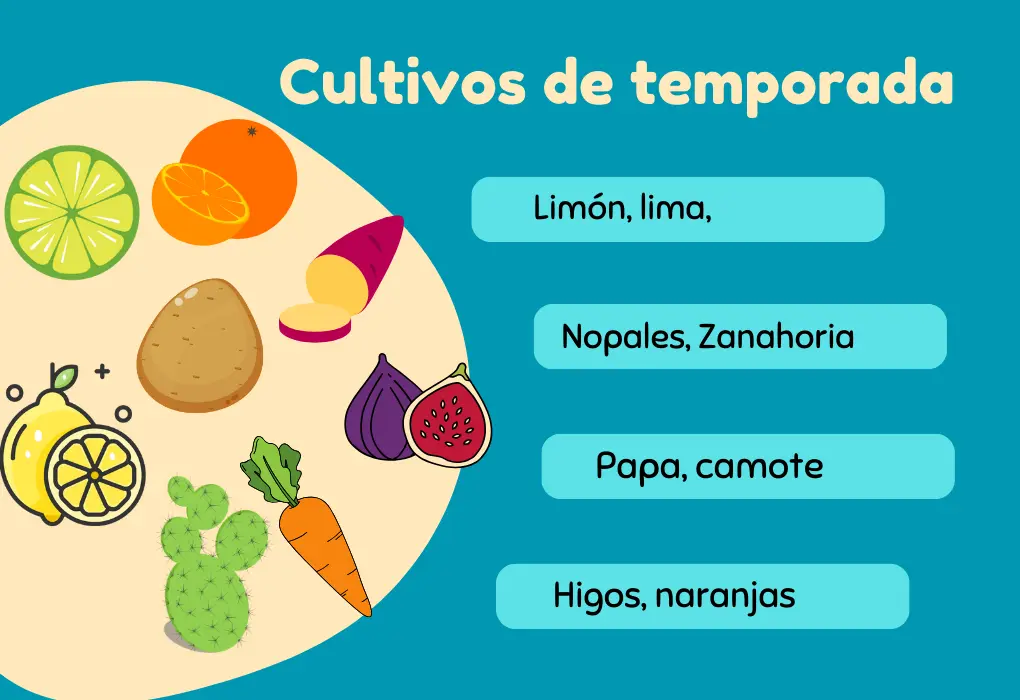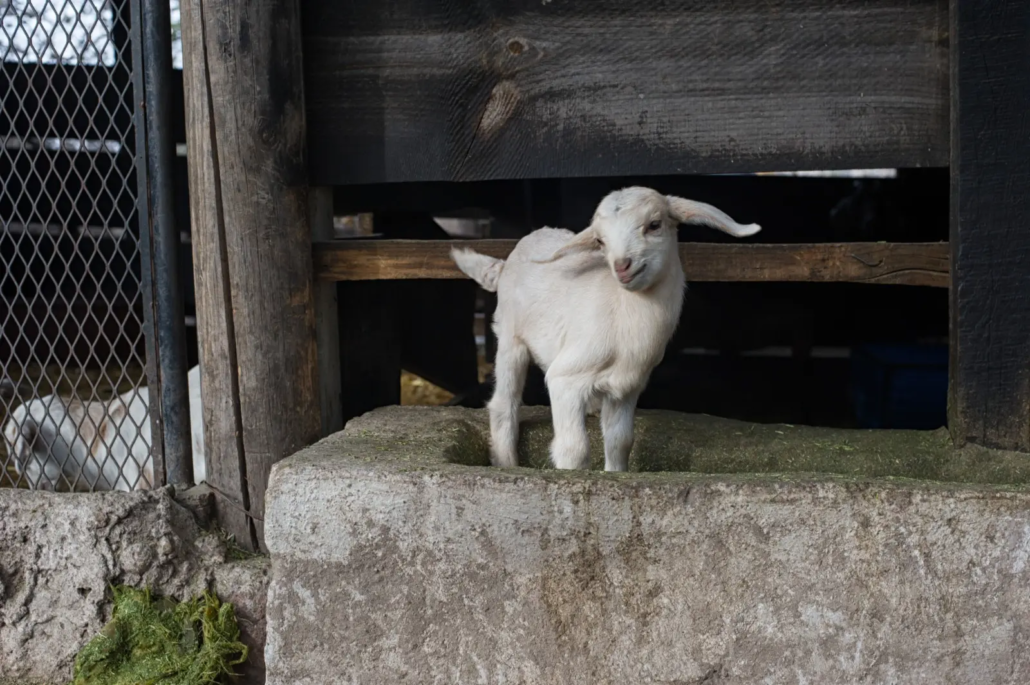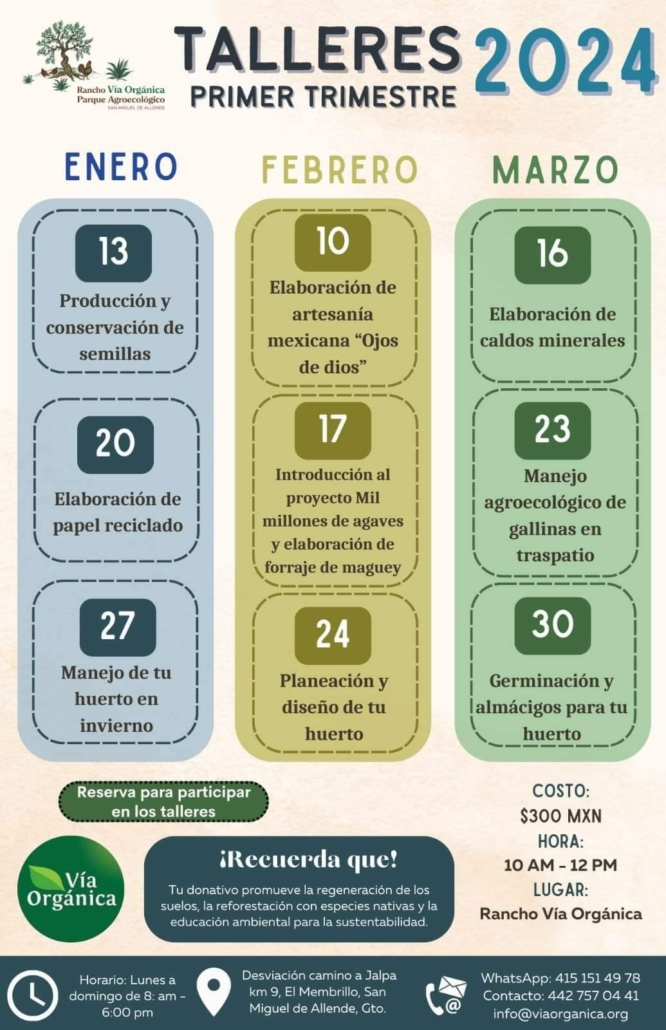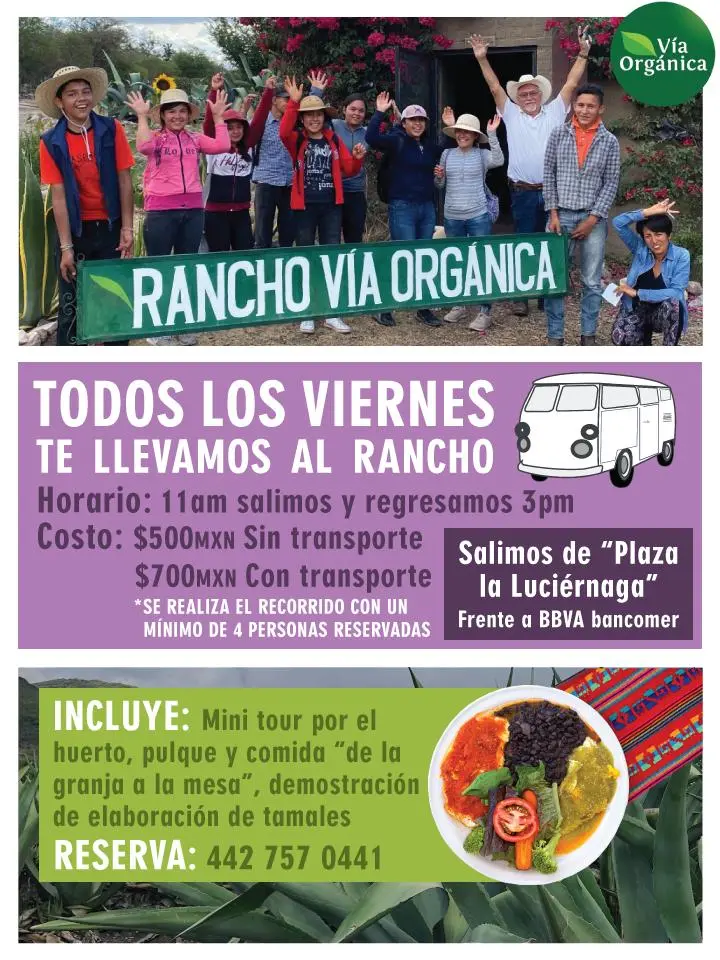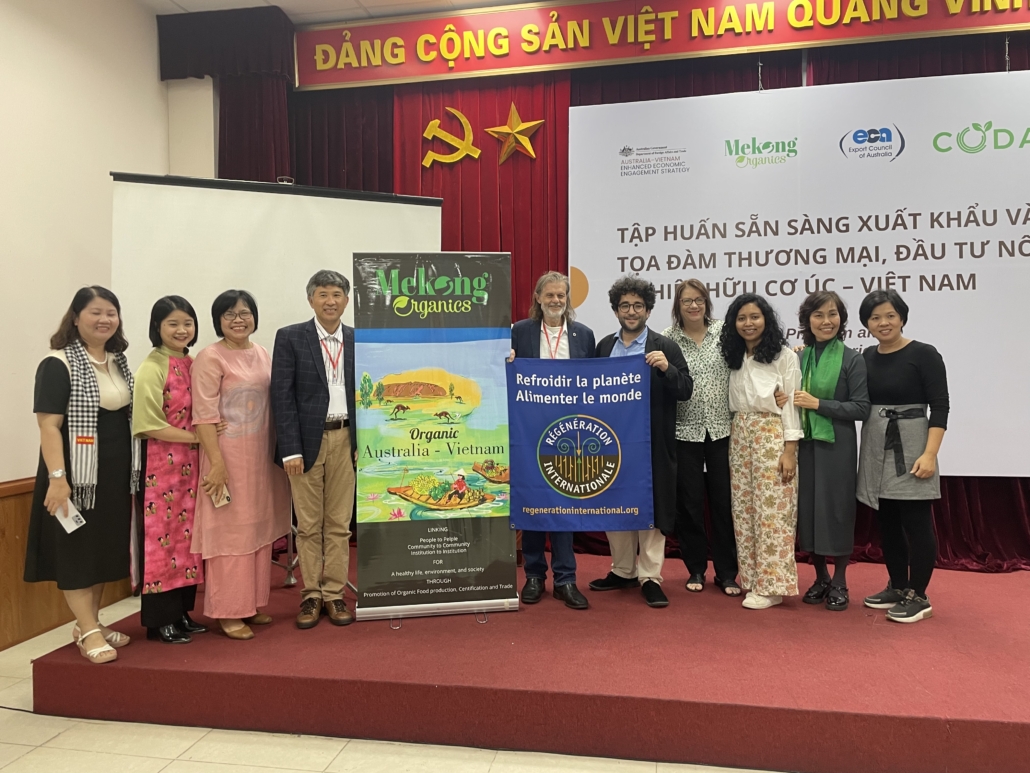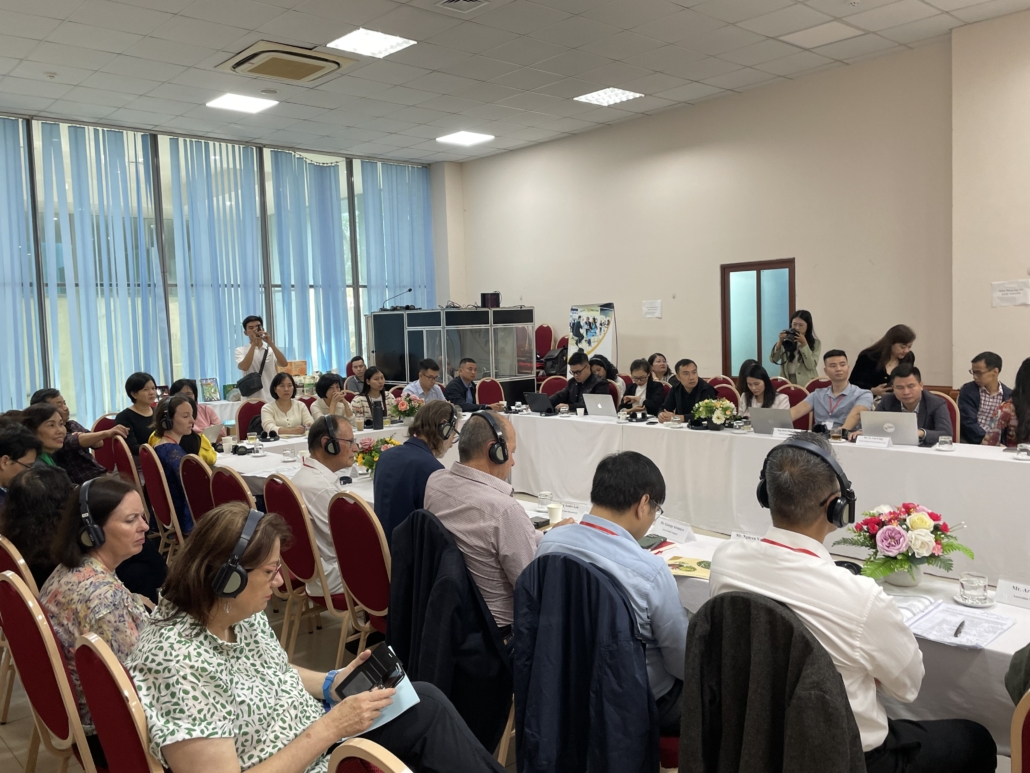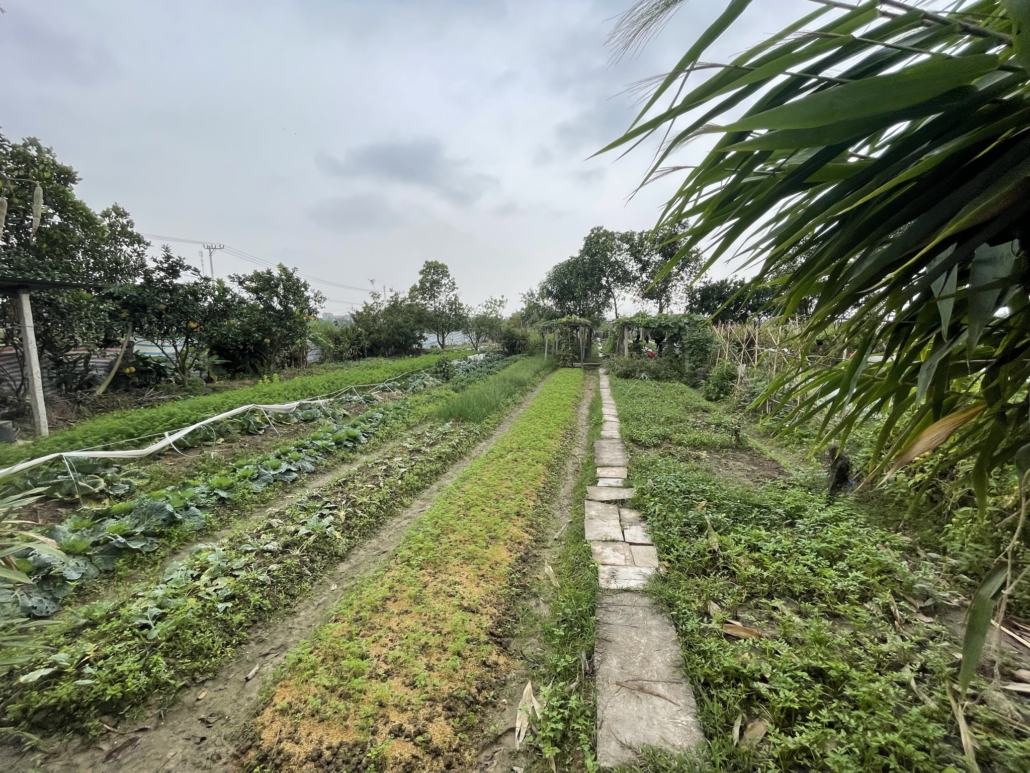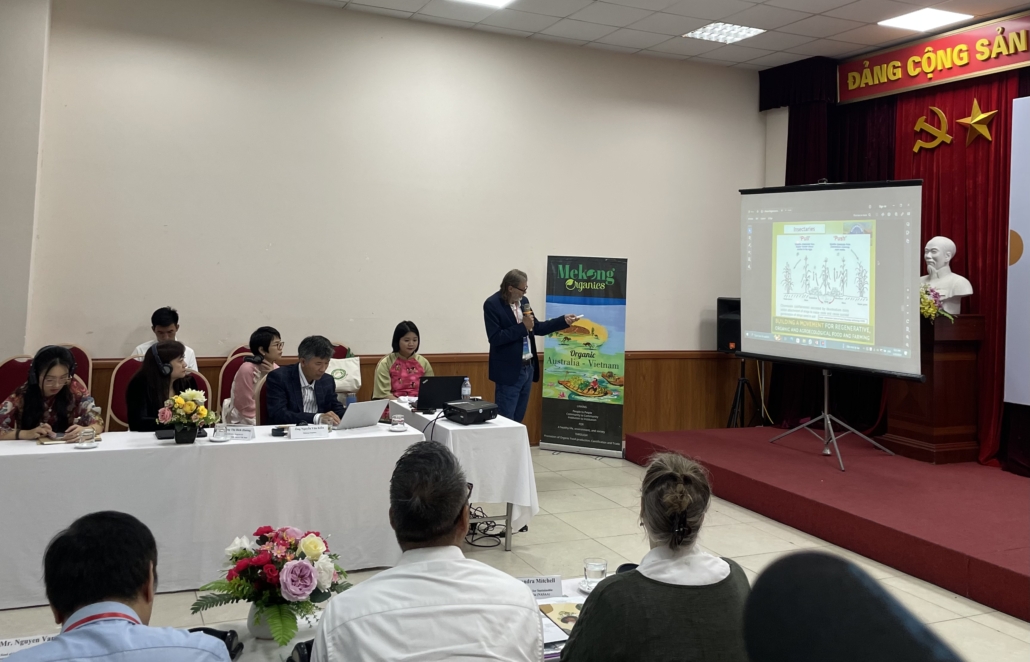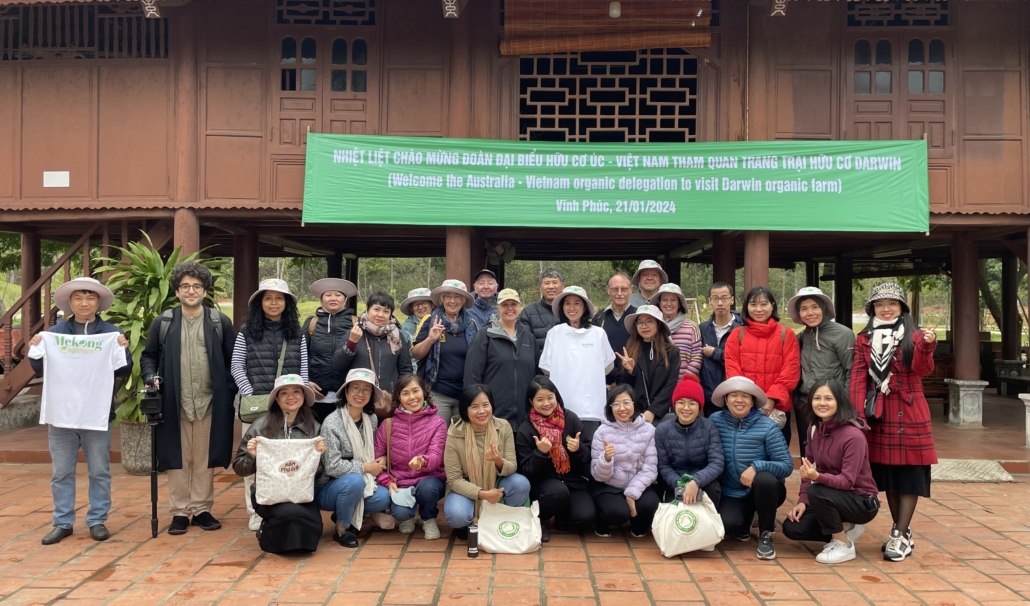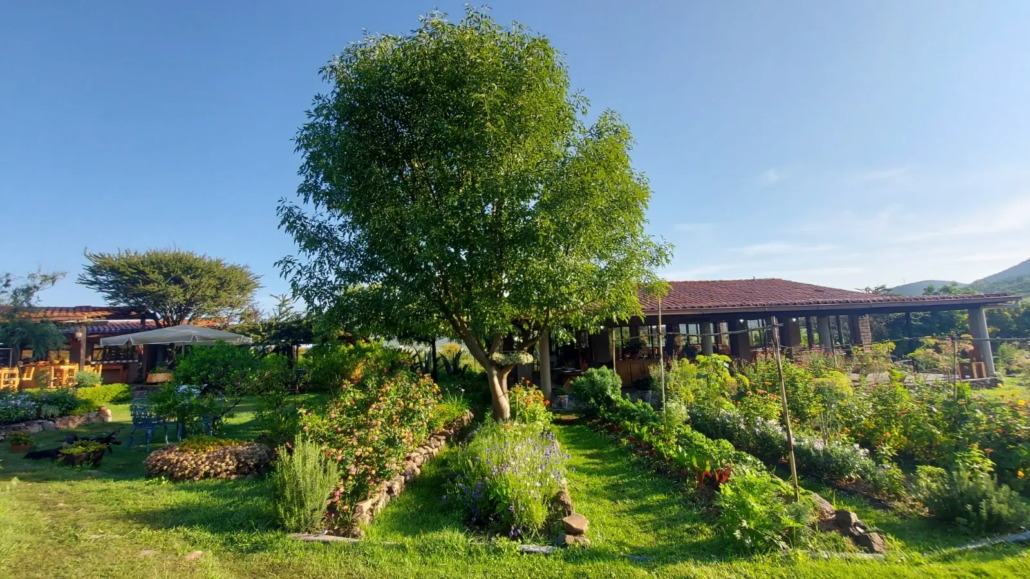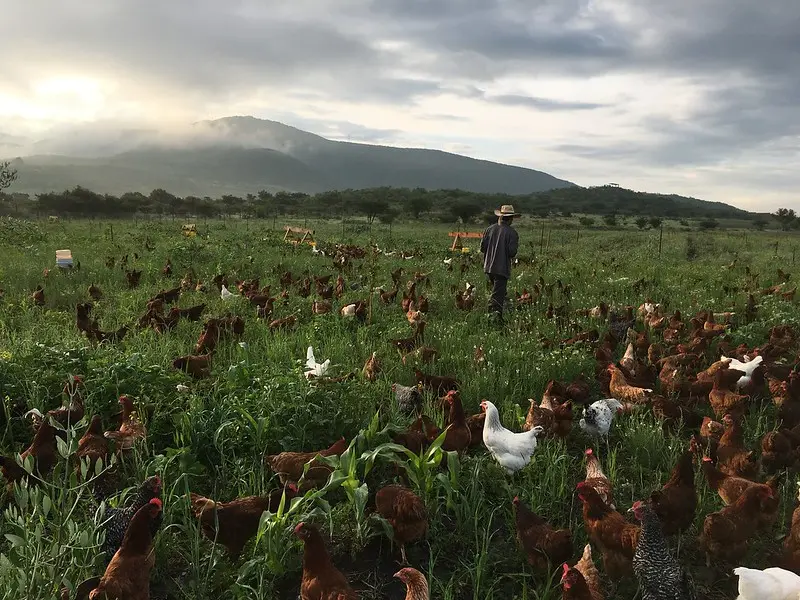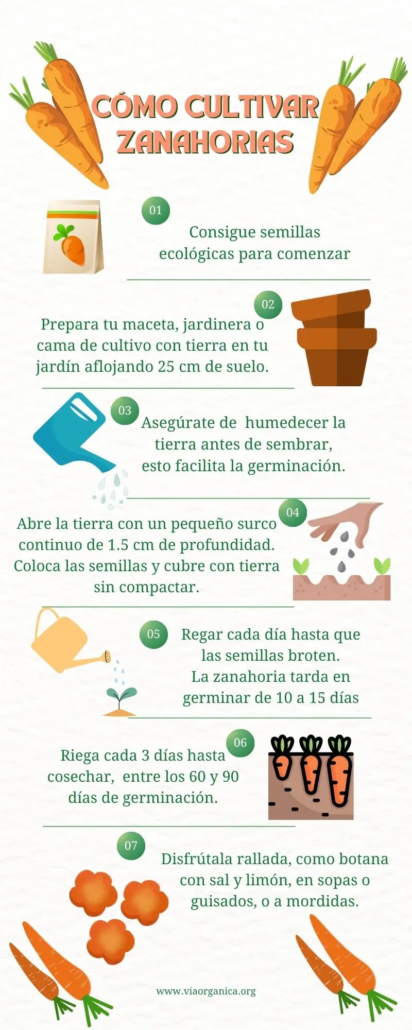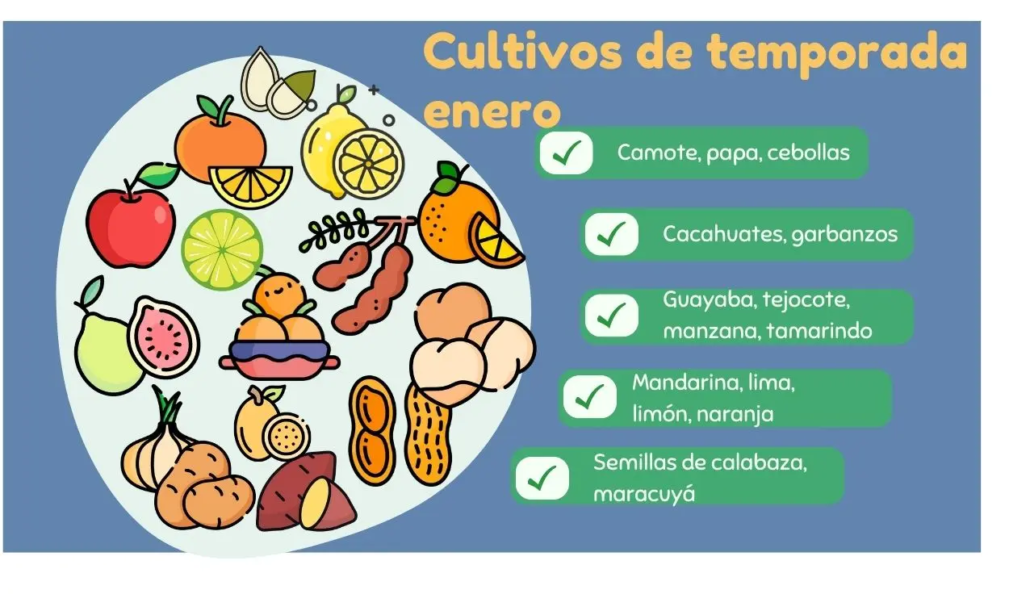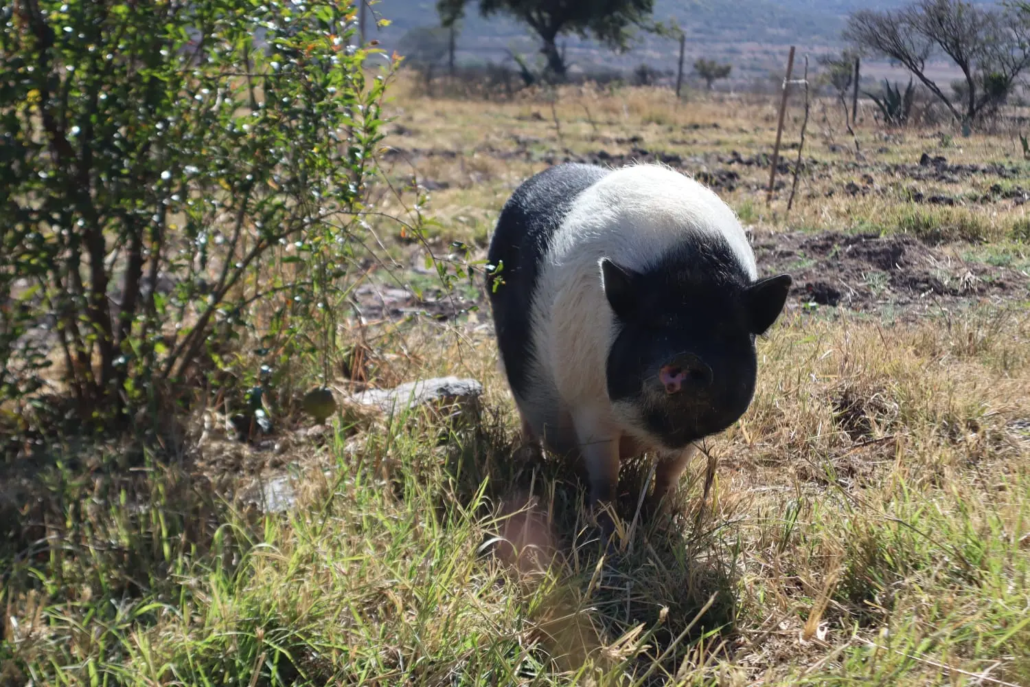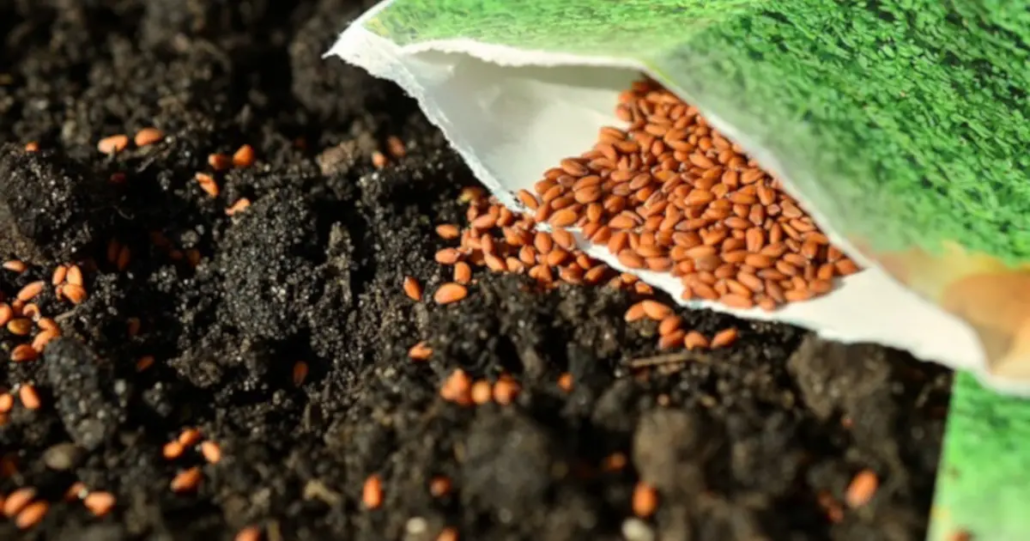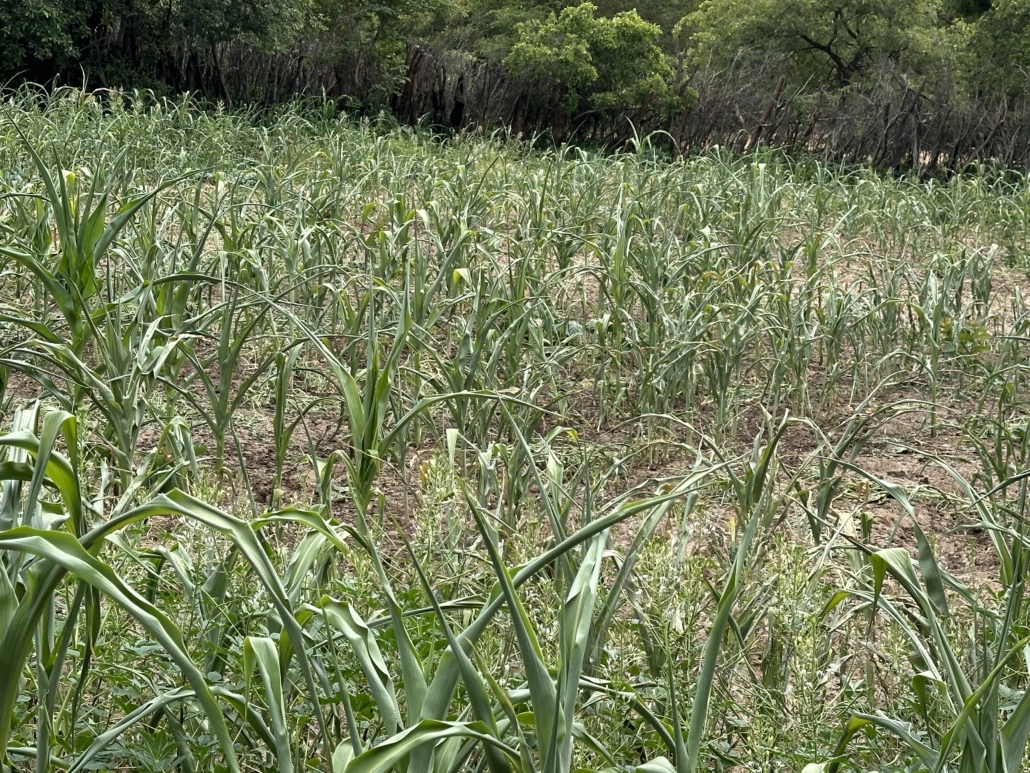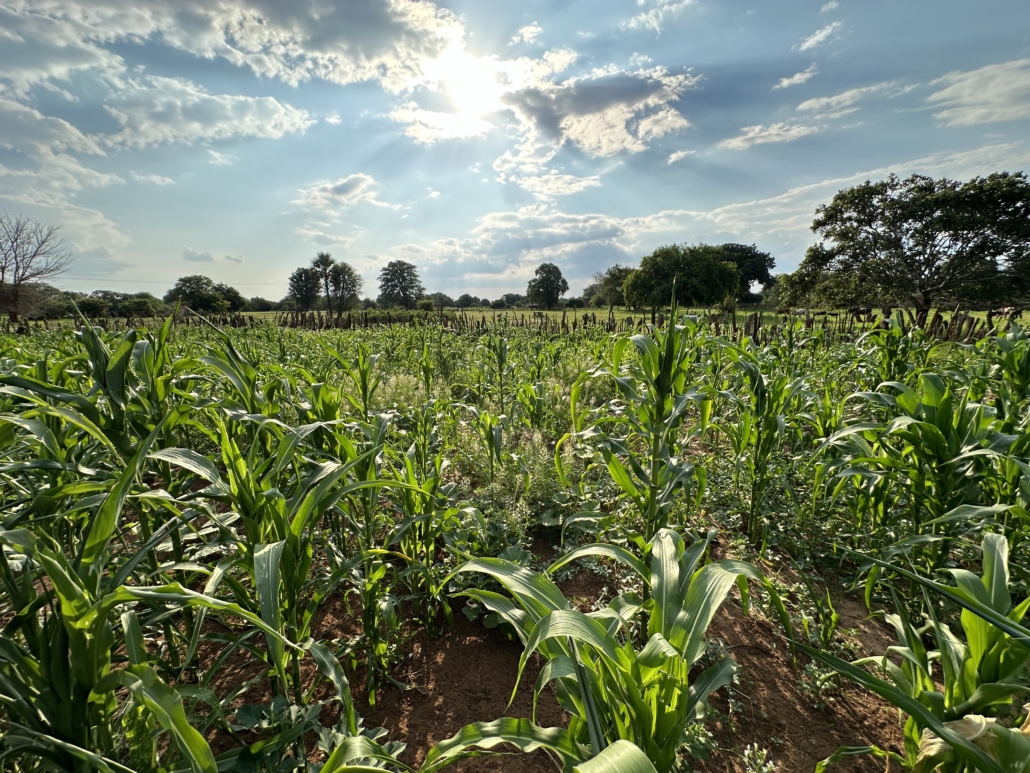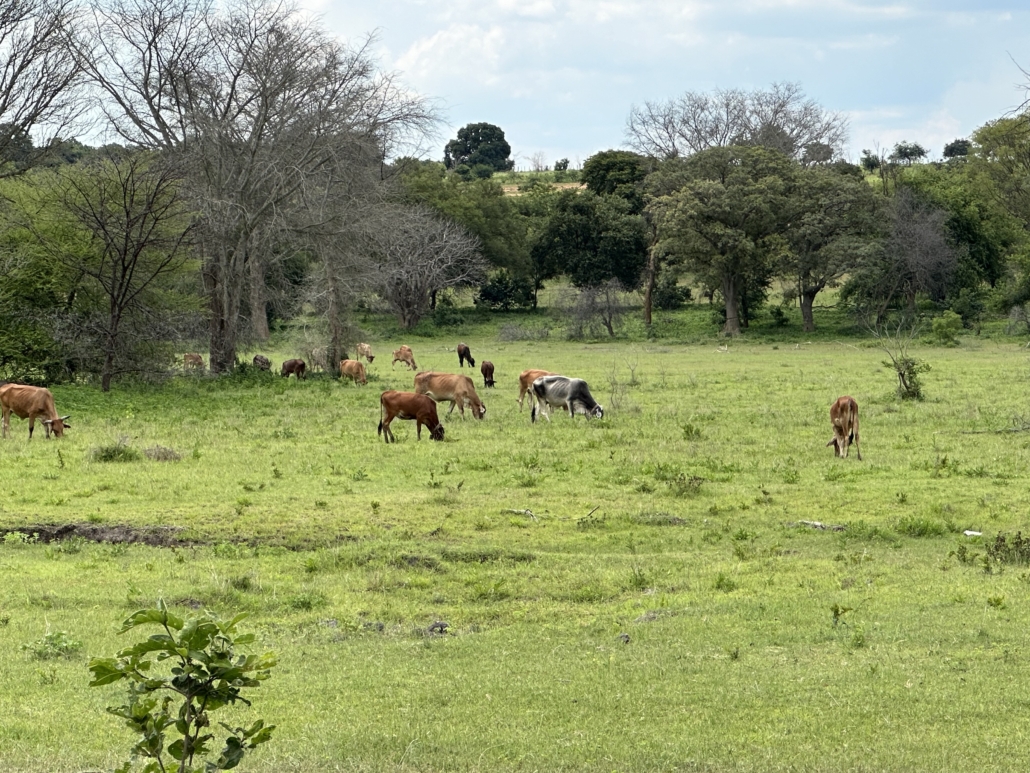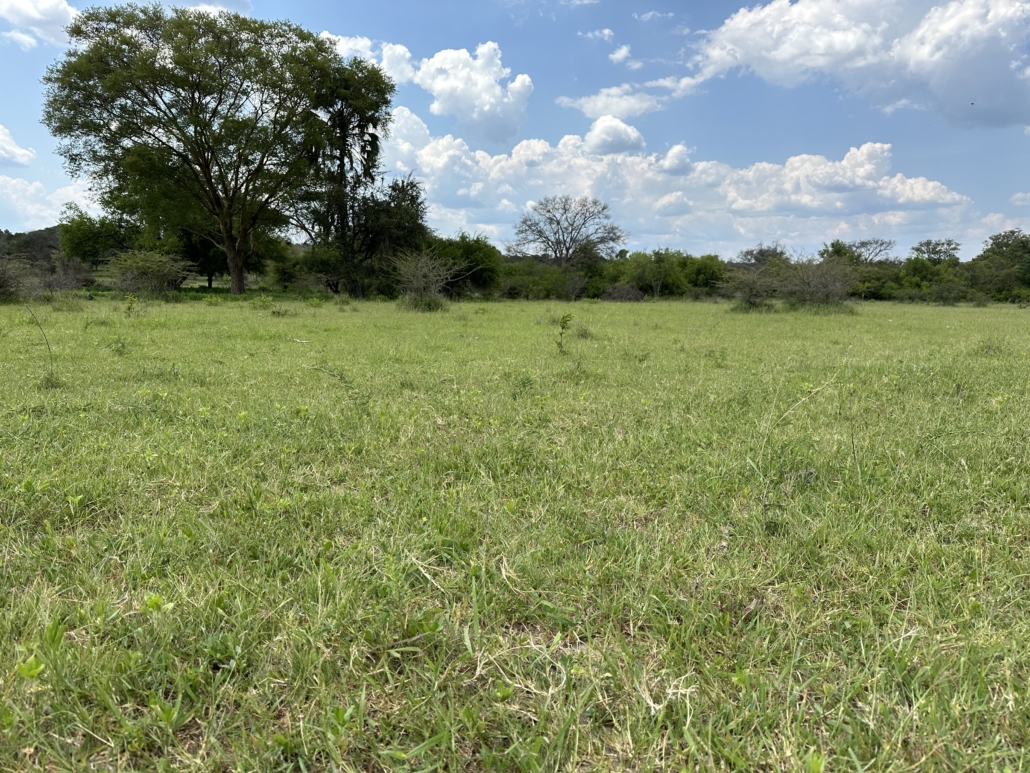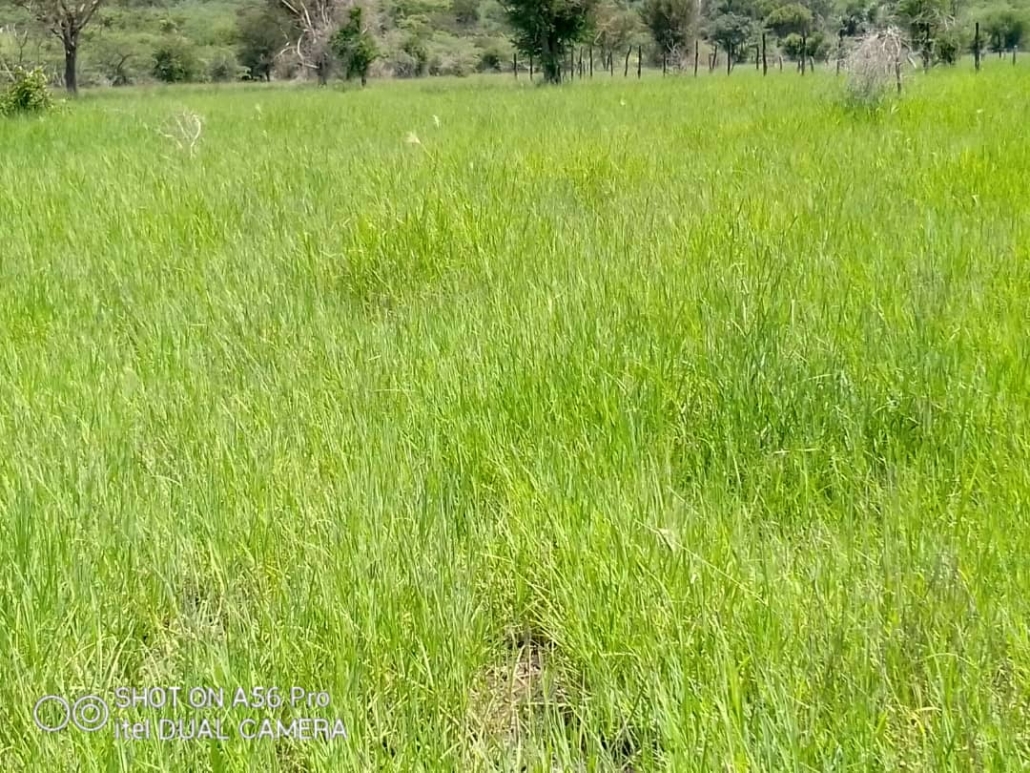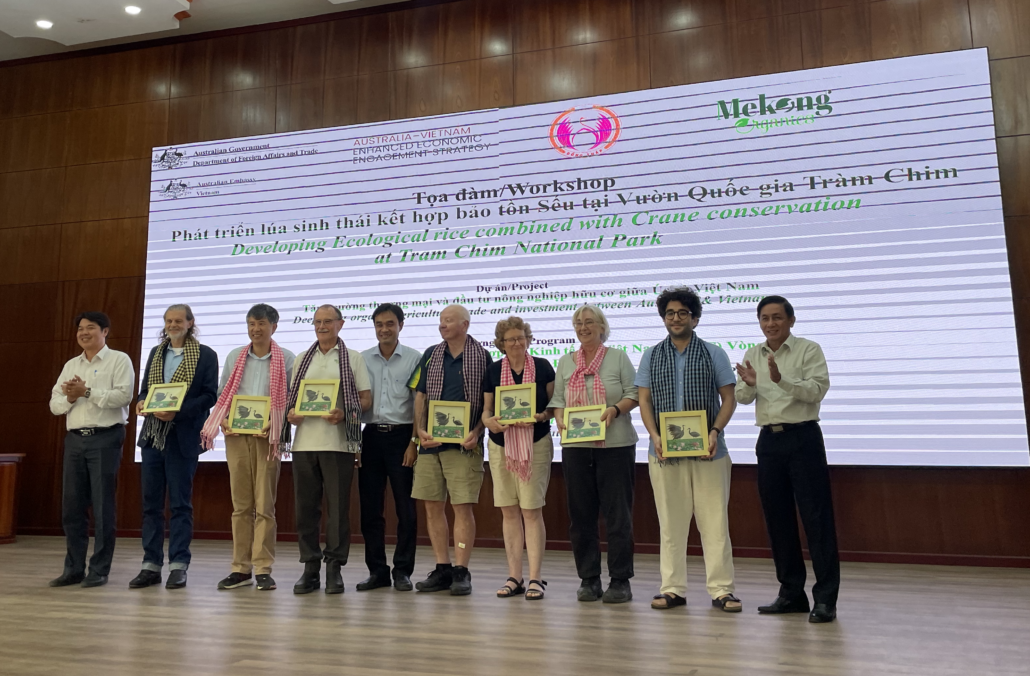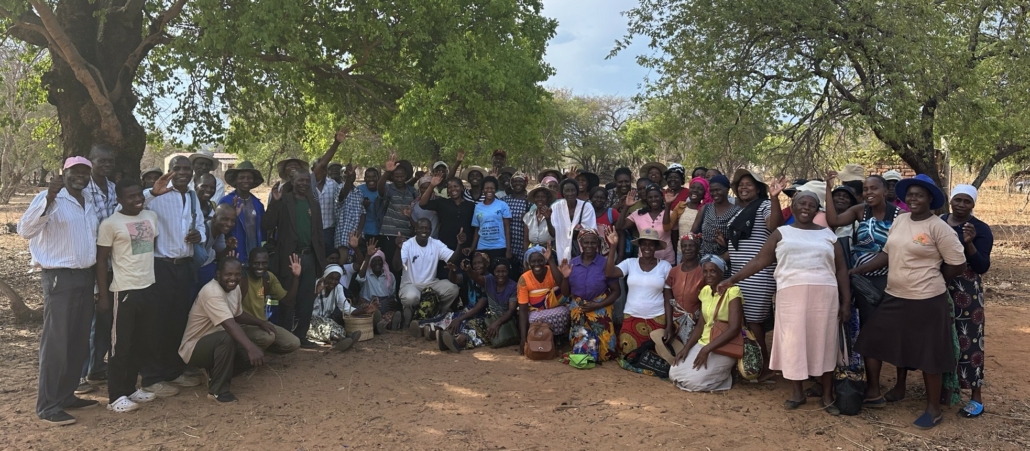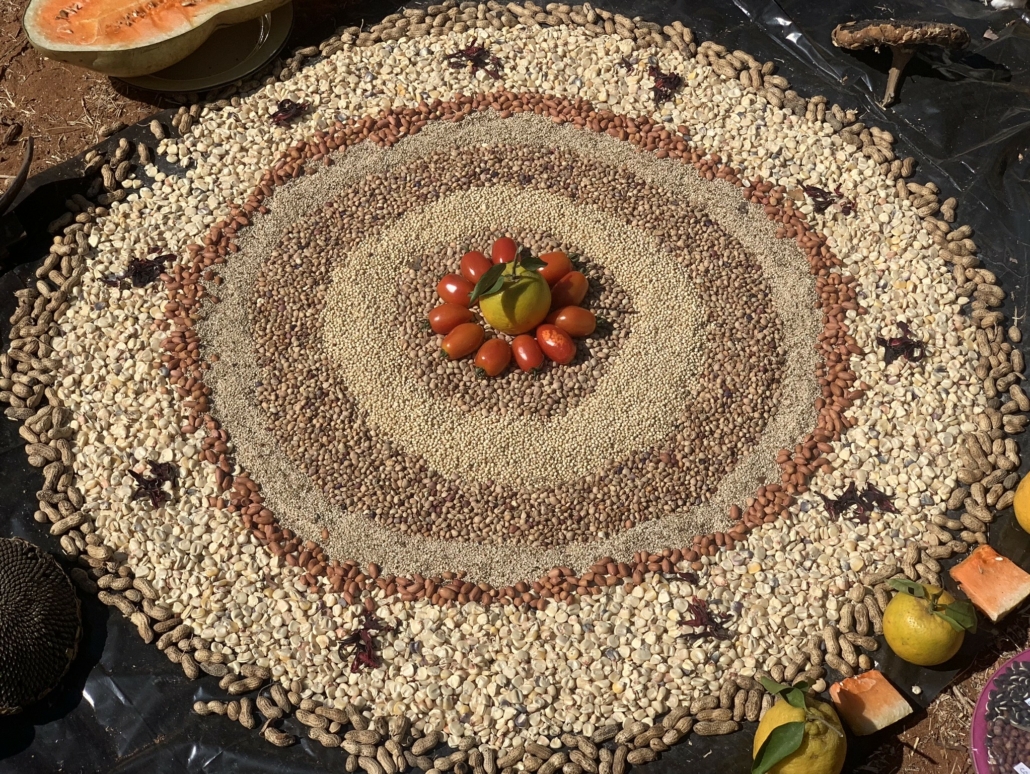A research paper published in Nature this February (2024) showed that the world had already passed the preferred Paris goal of 1.5C (2.7°F) and would pass the 2C (3.6F) threshold by 2030. 2023 broke records as the hottest year since records began, and 2024 is shaping to be even hotter. The World Meteorological Organization (WMO) estimated global temperatures in 2023 were 1.45C above the 1850–1900 average, exceeding the previous record warm years of 2016 and 2020. Global sea surface temperatures were the highest on record for all the months between April 2023 and January 2024, and this record-breaking trend continues.

The greenhouse gas carbon dioxide (CO2) reached a record of 424 ppm in May 2023, the highest in 800,000 years due to human activities. Humans have emitted this CO2 by burning fossil fuels, clearing forests, and farming degeneratively, oxidizing soil organic matter.
The WMO has reported that there has been a fivefold increase in extreme weather events (floods, storms, droughts, fires, etc.) in the last 50 years. The causes and adverse effects of climate disruption are worsening despite the Paris Agreement.
Climate Forcings
Changes to the Earth’s climate system affect how much energy enters or leaves the Earth’s climate equilibrium, forcing temperatures to rise or fall. Consequently, they are called climate forcings. Changes in the Sun’s brightness, long-term sun cycles, minor variations in the shape of Earth’s orbit over thousands of years, volcanic eruptions that inject light-reflecting particles into the stratosphere, methane from melting permafrost and forest fires from lightning strikes are natural climate forcings.
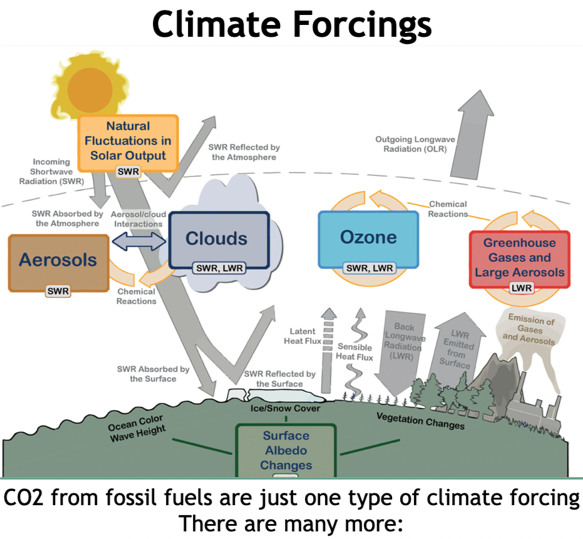
People cause climate forcings through numerous activities. The rising concentration of atmospheric CO2 and other greenhouse gases through the burning of fossil fuels, deforestation, loss of soil organic matter, deliberately lit forest fires, methane leakage from gas wells and animal factory farming, and nitrous oxides from synthetic fertilizers trap heat instead of radiating it into space are human forcings. They contribute to the disruption of the climate equilibrium.
Human-produced greenhouse gases (GHGs) absorb radiant heat and energy and reflect it in the atmosphere, causing an amplifying effect on water vapor, the main greenhouse gas. This is radiative forcing, and despite skeptics saying there is no evidence that CO2 causes warming, this forcing has been detected and measured since the 1970s.
Strong Scientific Evidence that Humans are Disrupting the Climate
NASA launched the IRIS satellite in 1970 to measure infrared radiation. The Japanese Space Agency launched the IMG satellite in 1996, which recorded similar observations. Their data over the 26 years found a decrease in radiation going out into space at the wavelength bands that greenhouse gases such as carbon dioxide and methane absorb energy. The measurements were direct evidence showing the increased heat and energy absorbed and radiated by these gases.
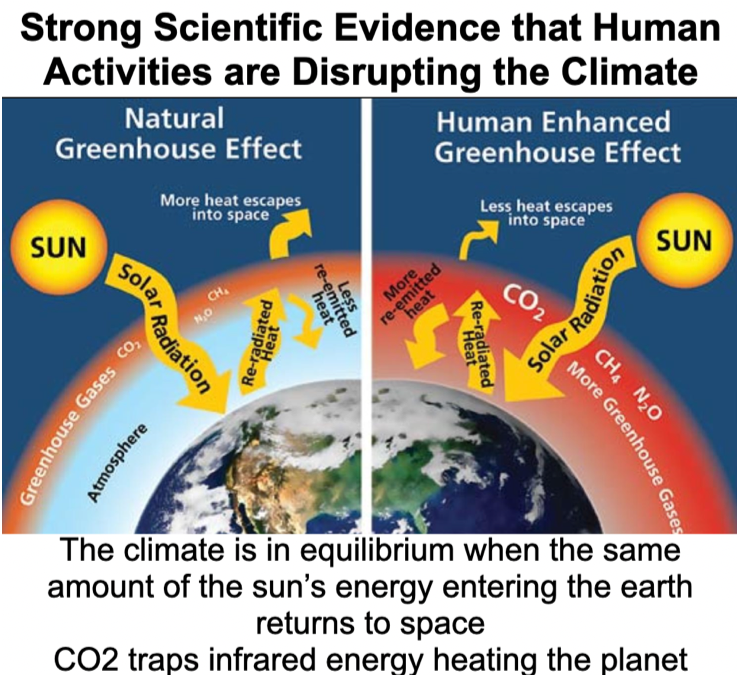
These results have been confirmed by subsequent research using more recent satellite data, showing that anthropogenic greenhouse gases trap energy and heat and are a significant cause of climate change. This has added an extra 4.1 W/m2 of energy into the atmosphere since 1750, the start of the Industrial Revolution. This amounts to an extra 2,091 trillion watts of energy, the equivalent of billions of atomic bombs, violently fueling and disrupting our weather systems.
Water vapor is responsible for 75% of the greenhouse gas effect; however, it does not persist, and the excess heat quickly goes out into space. NASA and NOAA models show that carbon dioxide is responsible for 20% of the greenhouse gas effects and is highly persistent, lasting over a thousand years. The other gases, methane, nitrous oxide, and halocarbons, account for 5% and are not as long-lasting. The models show that the heat-amplifying effect of CO2 stabilizes and amplifies water vapor as the main greenhouse gas so that heat does not readily escape into space. This leads to increased energy and heat fueling and disrupting our weather systems.
Forests and Vegetation Cover
Forests, vegetation cover, and soils profoundly affect local and global temperatures, the transpiration of water vapor, and atmospheric and terrestrial hydrology, including rainfall.
Greenhouse gases, such as CO2, are just one type of climate forcing. Forests absorb heat and energy through photosynthesis, shade the ground, and cool the planet through the transpiration of water vapor. Deforestation results in the soil absorbing sunlight and heating up, making this a significant warming climate forcing.
According to Our World in Data, 1.5 billion hectares (4.5 billion acres) of forest have been cleared over the last 300 years – since the beginning of the Industrial Revolution. That’s an area 1.5 times the size of the United States. This loss of forest cover is a significant climate forcing and contributor to increasing global temperatures.
The European Investment Bank estimates that around 15 to 18 million hectares (45 to 54 million acres) of forest are destroyed yearly, with 2,400 trees cut down each minute. A high proportion of this deforestation is driven by consumers in the world’s wealthiest countries to produce GMO soy and maize used to feed cruel confirmed animal feeding operations – factory farms in Western Europe and East Asia. These feeding systems are incredibly inefficient. They need 10 tons of plant protein to produce one ton of animal protein.

There is no justification for clearing these forests to ‘feed the world’ when they are not feeding the food insecure. This industrial agriculture system grossly wastes land and resources to provide commodities for the world’s wealthiest consumers. The same applies to the beef, biofuels, sugar, vegetable oils, cocoa, coffee, and paper produced on deforested land and exported to the global north. They are not produced to feed the undernourished; they are luxury and, in many cases, unnecessary commodities for the world’s most affluent consumers.
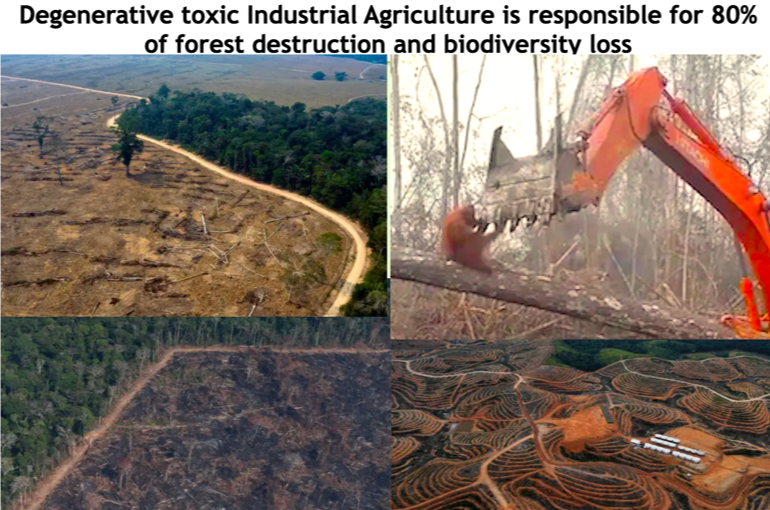
The United Nations Convention to Combat Desertification (UNCCD) states that industrial agriculture is responsible for 80% of deforestation and is one of the primary greenhouse gas emitters. Researchers calculated that the actual contribution of deforestation to global climate warming since 1850 is as much as 40 percent and that the current rate of tropical deforestation could add a further 1.5 degrees Celsius (2.7°Fahrenheit) to global temperatures by 2100 even if there were zero fossil fuel emissions.
Forests moderate local climates by keeping their local environments cool. They do this by shading the land and releasing moisture from their leaves. This process, called transpiration, requires energy extracted from the surrounding air, thus cooling it. A single tree can transpire hundreds of liters of water in a day. Every hundred liters (25 gallons) has a cooling effect equivalent to two domestic air conditioners daily.
Monitoring rapidly deforested regions of the tropics has shown the effect of losing this arboreal air conditioning. Sumatra has been losing forests to palm oil cultivation faster than anywhere else. A study found that since 2000, surface temperatures have increased by 1.05 degrees Celsius (1.8°F), compared with 0.45 degrees in forested parts. Another study found temperature differences between forest and clear-cut land of up to 10 degrees Celsius (18°F) in parts of Sumatra. Research in the Amazon found a difference of 3 degrees Celsius (5.4°F) between the cool of the forested Xingu indigenous park and surrounding croplands.
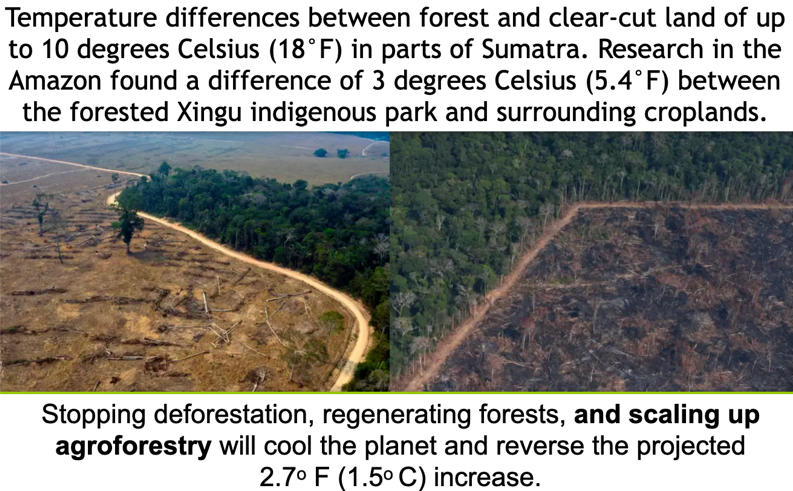
The regeneration of tree cover is one of the most effective strategies for climate change mitigation.
Clearly, the destruction of ecosystems is contributing to global warming, whereas regenerating these forests and rangelands would cool the climate.
Most of the Warming is in the Oceans
The NOAA states that more than 90 percent of the warming on Earth over the past 50 years has occurred in the oceans. The ocean’s heat energy will continue to warm the planet after net zero is achieved. Ocean heat is a significant driver of weather. The oceans and the atmosphere are already more than one degree Celsius warmer than at the start of the Industrial Revolution. They have broken new records at the beginning of 2024.
Even if CO2 levels went down to the 1750s level of 280 ppm, it would take centuries for the heat in the oceans to dissipate. Regenerating and conserving forests, rangelands, and diverse terrestrial ecosystems will cool the planet faster than only reducing GHGs. Scaling up agroforestry and silvopasture systems, where animals are grazed under trees, can significantly cool the planet, restore hydrology, and regenerate our climate.
What is agreed upon by most scientists is that the world is warming with increases in air and sea temperatures, ice sheets in Greenland and Antarctica are melting, most of the world’s glaciers are shrinking, and sea levels are rising.
This extra 2,091 trillion watts of energy is already violently fueling and disrupting our weather systems. It is causing weather events to be far more intense. Winter storms can become colder and are pushed further south and north than usual due to this energy, bringing damaging snowstorms and intense floods. Similarly, summer storms, especially hurricanes, tornadoes, tropical lows, etc., are far more intense, with increases in deluging destructive rainfall and floods. Droughts and heat waves are more common, resulting in more crop failures and water shortages. They are also fueling damaging forest and grass fires that are burning out whole communities and changing regional ecologies due to not allowing time for recovery before the subsequent fires.
The frequency and intensity of these events will only worsen exponentially when the world warms to 2 degrees Celsius (3.6 degrees Fahrenheit), the upper limit of the Paris Climate Agreement. We are on track to shoot far past this goal.
Eliminating Fossil Fuels by Replacing them with Renewable Energy is Not Enough
The final version of COP 28 calls for “transitioning away from fossil fuels in energy systems, in a just, orderly and equitable manner, accelerating action in this critical decade, so as to achieve net zero by 2050.”
COP 28’s ‘diplomatic’ language shows no intention to phase out fossil fuels. They will be a significant part of the energy mix and the resulting GHG emissions if, by some miracle, net zero is achieved by 2050.
The annual rate of CO2 emissions increased to 2 ppm per annum in the decade before the 2015 Paris Agreement. CO2 emissions have increased by about 2.87 ppm annually since 2015, so the rate is rapidly accelerating. Atmospheric CO2 increased by 37 billion tons of CO2 in 2023.
We must reach net negative emissions as soon as possible to avoid runaway global warming, wholesale biodiversity collapse, climate catastrophes, endless poverty-driven conflicts, forced migration, and wars.
Net Zero by 2050 is too late to stop catastrophic climate change. Even if the world transitioned to 100% renewable energy tomorrow, this would not prevent rising temperatures and sea levels. The world will continue to heat up because CO2 lasts around 1,000 years in the atmosphere. The oceans’ heat will continue adversely affecting the climate until it slowly dissipates.
Just eliminating fossil fuels by replacing them with renewable energy will only reduce part of the CO2 emissions, as fossil fuels are only responsible for a percentage of emissions. Research shows that emissions from destroying ecosystems such as forests and rangelands and the loss of soil organic matter are sources of a considerable amount of atmospheric CO2 and methane.
The UNCCD states that industrial agriculture has altered the face of the planet more than any other human activity. It is responsible for 80% of deforestation and 70% of freshwater use and is the most significant cause of terrestrial biodiversity loss.
The destruction of forests and diverse ecosystems generates the bulk of CO2 emissions associated with land use change, nitrous oxides from synthetic chemical fertilizers, the methane emitted by factory farms, and intense animal production. These are significant greenhouse gas sources.
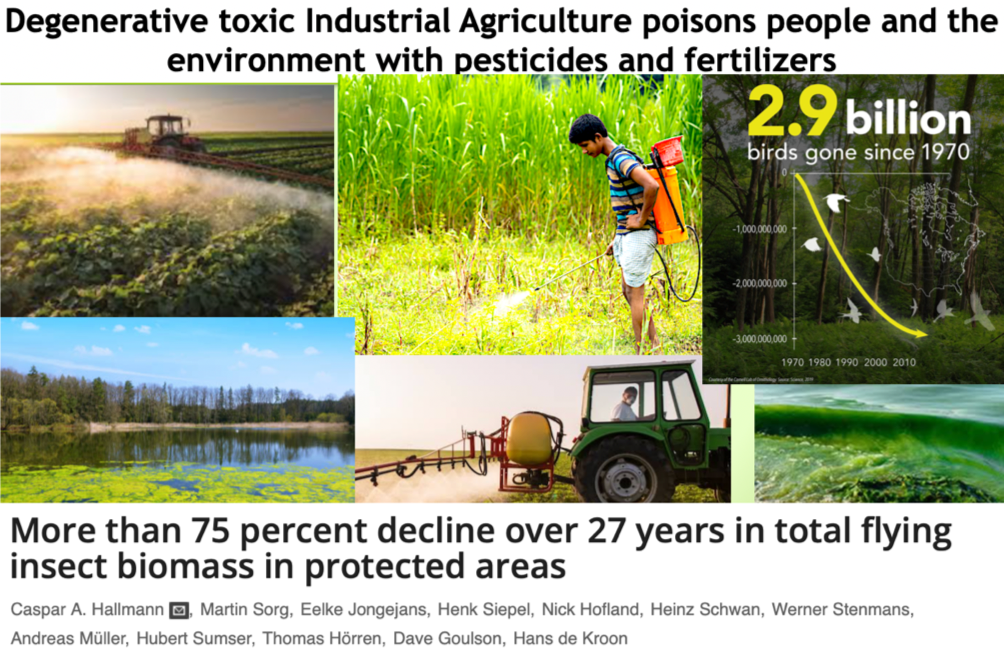
The widespread scaling up of industrial agriculture in the last century has neglected soil health and below-ground biodiversity, especially the soil microbiome, the source of most of our food, due to its focus on toxic synthetic chemicals as the basis of increasing production.
Soil carbon is the largest pool of carbon after the oceans. The soil holds almost three times as much carbon as the atmosphere, forests, and ecosystems combined. Degenerative land use is oxidizing this organic carbon into CO2. The loss of soil carbon through degenerative farming practices has been underestimated in its contribution to atmospheric GHGs. Oxidation of soil carbon is caused by excessive tillage, bare soil, and erosion. Synthetic nitrogen fertilizers stimulate the types of microbes that consume soil carbon and turn it into CO2. Research shows that it is a considerable contributor to the CO2 in the atmosphere.
A recent study analyzing the change in the proportions of Carbon 14 (C14) in the atmosphere raised severe doubt that the increase in CO2 mainly came from fossil fuels. C14 is created in the upper atmosphere from cosmic rays. They bombard nitrogen, turning it into radioactive C14. It is unstable and slowly decays back into nitrogen over thousands of years. This decay rate can be measured and used to determine the age of artifacts derived from living organisms. When they are alive, they absorb carbon, and this includes C14. Over time, as the C14 decays, its proportion decreases, which is used as an accepted scientific method for dating the age of archeological and historical artifacts.
Fossil fuels are so old that all the C14 has decayed to nitrogen. They have none. Scientists used this fact to analyze the percentage of the total CO2 due to the use of fossil fuels from 1750 to 2018
They stated, “Our results show that the percentage of the total CO2 due to the use of fossil fuels from 1750 to 2018 increased from 0% in 1750 to 12% in 2018, much too low to be the cause of global warming.”
This study, naturally, is very contentious; however, it is an essential part of the debate on how we manage the causes of climate change. The current focus is mainly on reducing fossil fuel use, methane production from ruminants, and scaling up renewable energy. The research shows this approach is highly problematic in stopping the projected temperature rises and changing climate.
The research shows that a high percentage of the increase in CO2 in the atmosphere since 1750, from 280 ppm to over 400 ppm, comes from living carbon sources. These sources are obviously from clearing forests and the loss of soil carbon. The 1.5 billion hectares of forests (4.5 billion acres) cleared since 1750, the beginning of the Industrial Revolution, an area 1.5 times the size of the United States, is a significant contributor to CO2 in the atmosphere.
This loss of forests has made, and continues to make, a massive contribution to the current CO2 levels. Previously, they were essential in removing CO2 through photosynthesis and stabilizing Earth’s weather and rainfall. Not only has this removal capacity been lost, but the billions of tons of biomass have degraded into CO2 and released billions of tons into the atmosphere and oceans.
Climate change will continue to worsen unless we stop all deforestation and regenerate ecosystems so that instead of emitting CO2, they remove it via photosynthesis, storing it in plant biomass and as soil organic matter. There is an urgent need to transition industrial agriculture, a massive contributor to climate change, to best-practice regenerative agricultural systems that can remove CO2 and cool the climate.
Carbon Dioxide Removal is Essential to Cool the Climate
The United Nations’ Intergovernmental Panel on Climate Change (IPCC) states that keeping global warming to 1.5°C can only be achieved through carbon dioxide removal.
“All pathways that limit global warming to 1.5°C with limited or no overshoot project the use of carbon dioxide removal (CDR) on the order of 100–1000 Gt CO2 over the 21st century. CDR would be used to compensate for residual emissions and, in most cases, achieve net negative emissions to return global warming to 1.5°C following a peak (high confidence).” (IPCC 2018)
Regenerating natural ecosystems and soil carbon sequestration are two carbon dioxide removal technologies recommended by the IPCC to achieve this goal.
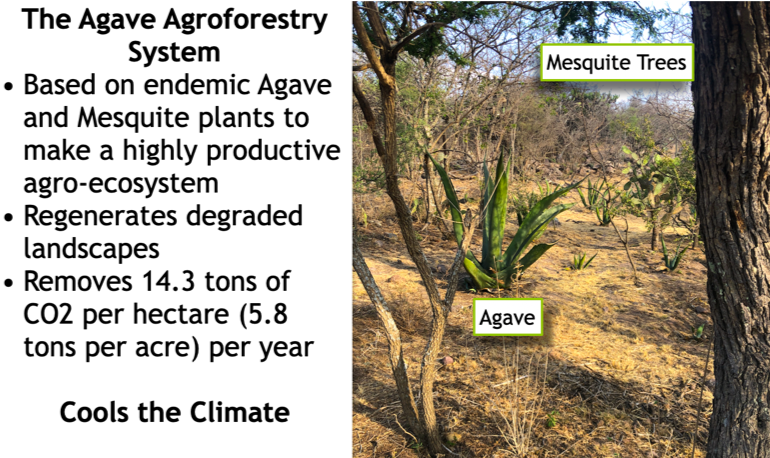
Cooling the Climate
The climate news isn’t good now, with devastating storms, droughts, floods, and fires everywhere.
The facts are that solar/planetary cycles, greenhouse gases, and forest/vegetation cover have roles in climate forcing and contribute to the changing climate. While we cannot change the solar/planetary cycles, we can change the level of greenhouse gases and regenerate ecosystems to cool the planet and restore the hydrology and climate.
We have enough evidence based on current best practices that scaling up a percentage of best practice regenerative agriculture systems can remove more than the current emissions of CO2 to reduce the levels in the atmosphere and oceans. The scaling up of these systems by regenerating a high biodiversity of plants and animals in agroecosystems will cool the planet.
The following articles in this series will detail how we can do this. The good news is that we can turn it around by regenerating our planet. We know how to do it – it isn’t rocket science. Many of us are doing this now. We need many others to join us. Together, we can give ourselves, our children, and all the living species we share our planet with a great future.
Ronnie Cummins, one of our founders, wrote: “Never underestimate the power of one individual: yourself. But please understand, at the same time, that what we do as individuals will never be enough. We’ve got to get organized, and we’ve got to help others in our region, our nation, and everywhere build a mighty Green Regeneration Movement. The time to begin is now.”
Please support our mission to regenerate our climate, people, and planet.
